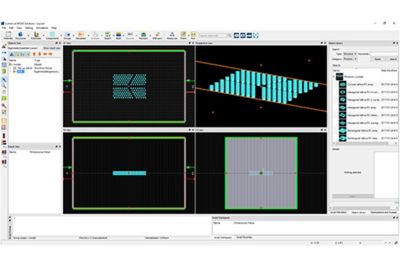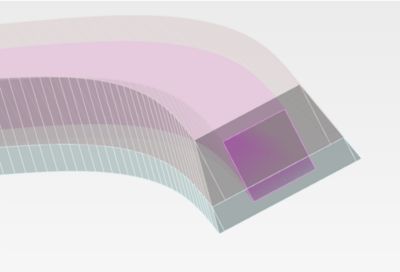Quick Specs
Lumerical MODE puts high-accuracy waveguide simulation at the forefront with a Finite Difference Eigenmode (FDE) solver, a variational FDTD (varFDTD) solver, and a Bidirectional Eigenmode Expansion (EME) solver.
Whether you are working on fiber optics or integrated photonics, MODE has everything you need to get the most out of your waveguide and coupler designs.
Comprehensive Optical Waveguide Design Environment
MODE enables you to accurately model waveguide and coupler performance. Combining bidirectional Eigenmode expansion, varFDTD, and finite difference eigenmode solvers, MODE can easily handle both large planar structures and long propagation lengths, providing accurate spatial field, modal frequency, and overlap analysis.

Lumerical MODE puts high-accuracy waveguide simulation at the forefront with a Finite Difference Eigenmode (FDE) solver, a variational FDTD (varFDTD) solver, and a Bidirectional Eigenmode Expansion (EME) solver.
JULY 2024
The Ansys Lumerical 2024 R2 brings a suite of powerful updates and features across its photonics core technologies, ecosystem, cloud and HPC, workflows and user experience.

Enhanced functionalities for layer definition and management, improving design workflow efficiency.
CAPABILITIES
Create your model faster — and with accuracy — by employing Lumerical MODE. Lumerical MODE lets you focus on ideas and product, instead of worrying about how the software can get you there. The Bidirectional Eigenmode expansion and varFDTD engines easily handle both large planar structures and long propagation lengths, providing accurate spatial field, modal frequency, and overlap analysis.

It's vital to Ansys that all users, including those with disabilities, can access our products. As such, we endeavor to follow accessibility requirements based on the US Access Board (Section 508), Web Content Accessibility Guidelines (WCAG), and the current format of the Voluntary Product Accessibility Template (VPAT).
If you're facing engineering challenges, our team is here to assist. With a wealth of experience and a commitment to innovation, we invite you to reach out to us. Let's collaborate to turn your engineering obstacles into opportunities for growth and success. Contact us today to start the conversation.